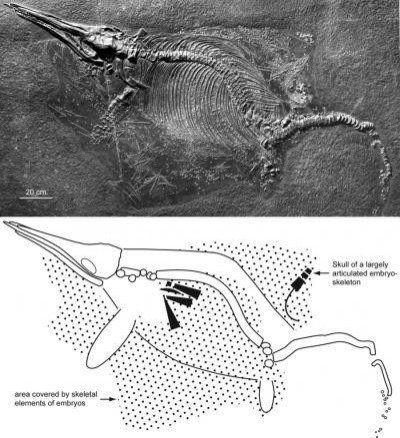Exploding Dinosaur Carcasses? Didn't Happen Concludes One Research Group

Dead dinosaurs likely didn't explode after purification, leaving scattered bones for archeologists to find millions of years later, according to one research group.
Typically, researchers find dinosaur fossils dispersed, which led to the theory that decomposition caused dino carcasses to expand and burst.
However, the fossil of a pregnant ichthyosaur in Germany that died 182 million years ago challenges this notion. The mother's bones remained intact whereas the embryo's bones scattered outside the womb.
Here's where it gets kind of gross.
Since ichthyosaurs have the same size range as humans, researchers tested the exploding hypothesis with 100 bloated human corpses. The interiors of the human corpses, measured through the belly button, didn't reach the necessary pressure to cause an explosion, according to the researchers.
Andreas Wetzel, sedimentary scientist at the Geologisch-Paläontologisches Institut, Universität Basel, lead the research published in the journal Palaeobiodiversity and Palaeoenvironments.
Large vertebrates that decompose cannot act as natural explosive charges. Zurich paleontologist Christian Klug said in a statement. Our results can be extended to lung-breathing vertebrates in general.
Instead of bone-scattering explosions, the research team suggested that 182 million years ago, the pregnant ichthyosaur became preserved under specific circumstances.
The group hypothesized that the carcass rested in medium depth waters, not enough to crush the dinosaur, but enough pressure to dissolve the gases in the body. The carcass then sank to the bottom of the sea and decomposed, released the embryo and minor currents scattered the embryo bones but left the mother's bones intact.
© Copyright IBTimes 2024. All rights reserved.





















